In mid-November I walked at Distillery Creek and was shocked at the state of the vegetation.
I had previously been there after rain in September when all was green and relatively lush. I had expected to see signs of profuse flowering of the large Daisy-bushes, the Olearias and indeed there were masses of seeds developing from their flower-heads. However, I had expected one of the species, Dusty Daisy-bush Olearia phlogopappa var. phlogopappa to continue to flower over the summer, as they have done in past years, but I saw only a few small specimens still with any flowers.
There were only a few, dried out specimens of the small white ground-covers, which I had seen blooming in the Lorne forest just the day before. These include the two Starworts with pretty small white daisy flowers, Forest Starwort Stellaria flaccida and Prickly Starwort Stellaria pungens.
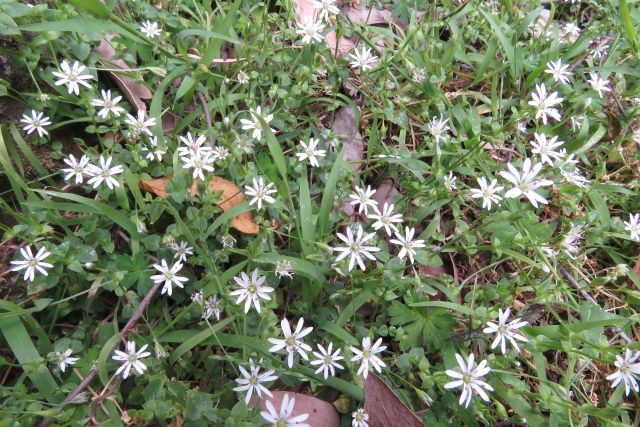
Forest Starwort
I was disappointed not to see Mountain Clematis Clematis aristata, as I had noticed it flowering profusely in wetter forests. The large white flowers are usually high up in the treetops and very difficult to see. It is always interesting to check if they are male or female, as they are dioecious, the female and male flowers being on separate plants.
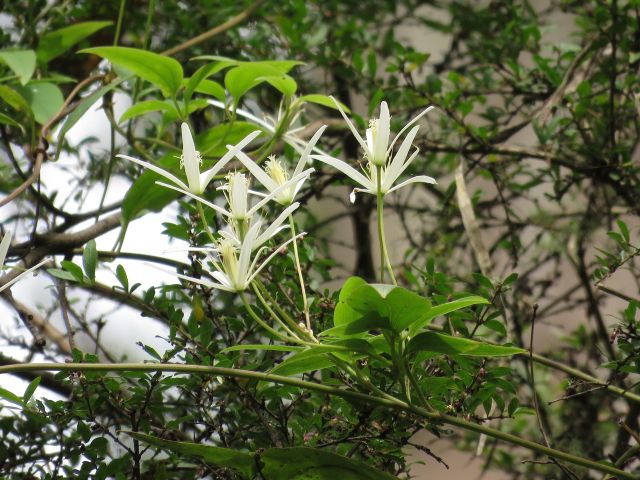
Mountain Clematis female
A highlight for me was seeing for the first time, at the back of Lorne, a favourite rainforest plant of mine that is very rare in our district. I always have to feel the leaves of the aptly named Blanket Leaf Bedfordia arborescens. The silvery underside of the long, narrow, green leaves are soft and silky, and currently the plants are bearing clustered yellow, daisy-like flowers.

Blanket Leaf
The waterways are probably the best places in our district to see flowers over the summer, and are a delightful respite from summer heat. The highlights are likely to be small plants growing in, or very close to, the water. There are quite glorious yellow flowers on the Running Marsh-flower, which has recently undergone a name change from Villarsia reniformis to Ornduffia reniformis. It is the only indigenous water-lily type plant to be found here.

Running Marsh-flower
Water Ribbons Triglochlin procera, with their green, erect flower spikes and long strap-like leaves, are a feature of the shallow water and the water edges.

Water Ribbons
Austral Brooklime Gratiola peruviana grows in the mud with fleshy upright stalks, paired stem-clasping leaves, and attractive pinky-white flowers on short stalks in the axils.
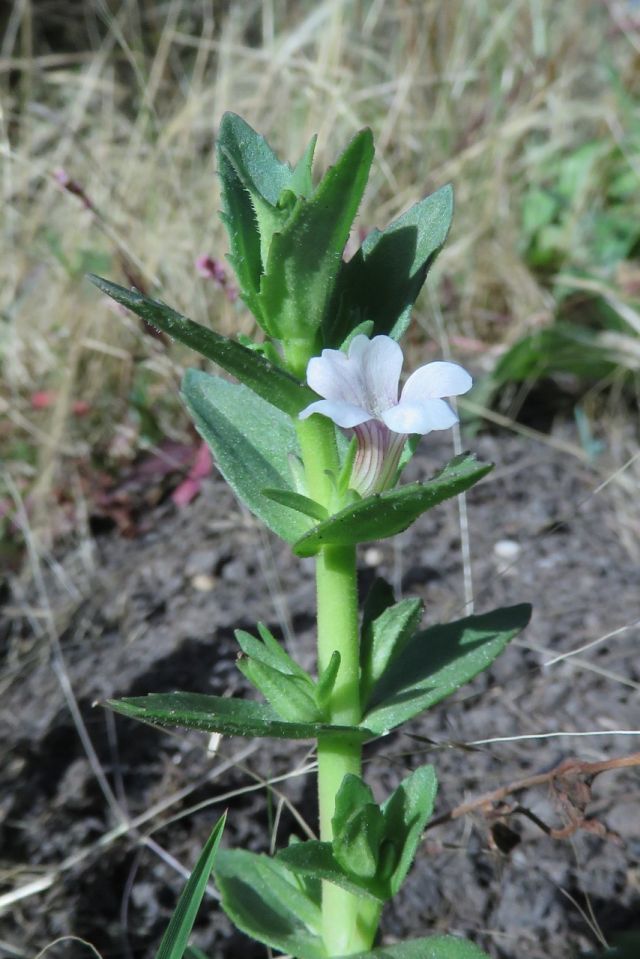
Austral Brooklime
Look out for Manuka Leptospermum scoparium, but be aware, it is easy to confuse with Prickly Teatree L. continentale, which should also be in flower, but growing in a different habitat.

Manuka
Two hardy prostrate plants are doing well. Karkalla Carpobrotus rossii, a succulent perennial, has thick fleshy leaves and startling bright- pink flowers with white centres.

Karkalla
I also like the attractive newly formed, globular, reddish, spiny fruits of the much maligned Bidgee-widgee Acaena novae-zelandiae. However, they are very effective at spreading their seed on clothes and throughout their habitat, smothering other plants with their vigorous growth.
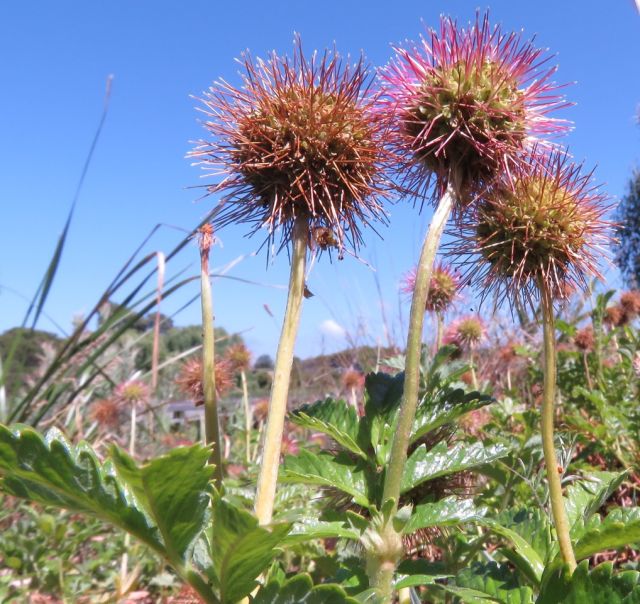
Bidgee-widgee
I nearly forgot the current display in Allen Noble Sanctuary of the clustered small, bright-yellow flowers of Common Everlasting Chrysocephalum apiculatum, which were planted by the shire. These are also flowering beautifully at the Anglesea Lookout.
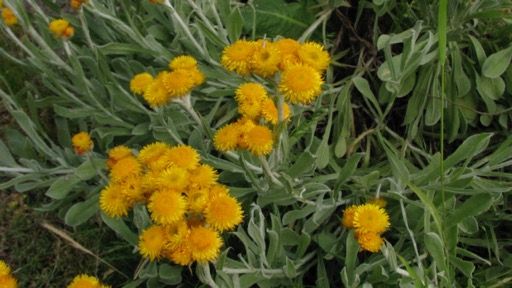
Common Everlasting
Remember to take ‘Flowers of Anglesea and Aireys Inlet’ just in case!
Ellinor Campbell